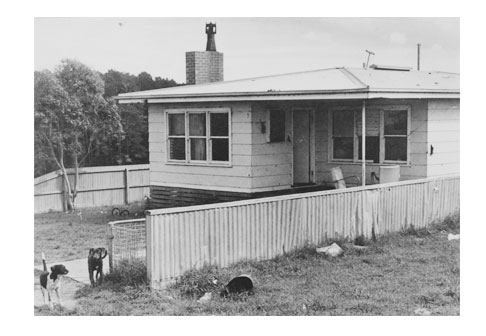Panel 8 – Stolen Generations
“In October 1995 the Federal Minister for Aboriginal and Torres Strait Islander Affairs announced a Human Rights Commission into the taking away of Aboriginal children past and present and what can be done to end this.”
“This Human Rights Commission came to Melbourne in January 1996. Its terms of reference were: to look at five issues that relate to Aboriginal children who have been taken away.
These issues are:
– How many Aboriginal children these policies and practices removed from their families?
– The past and continuing effects the separation has had on the Individuals it has happened to, their families and the Aboriginal communities.
– What should and/or can be done to change the laws, policies and practices, and what assistance is needed to help locate and reunite Aboriginal families and communities as a result of these past practices.
– The current laws, policies and practices affecting the care, protection and placement of Indigenous children outside their family and/or community environment.
– The justification for, and the nature of, compensation, if any, for those affected by these separations.”

Up Until the early 1970s Aboriginal people were either taken from their families, kin and friends, or their children were taken from them.
Usually no reason was given, neither to the children nor their families. The standard claim was that their parents were not ‘fit and proper to care for their children’ or ‘the children were in need of care and protection* which could cover a number of categories.
Categories such as: no food In the cupboards, no new clothing, no running water, no proper amenities, right down to ‘the mother was too sick to look after her children’, no proper supervision. They would even use the argument that they were at risk because of the families’ use of alcohol or risk of loose morals because some one decided the family had loose morals. But they never asked the parents, family or friends, let alone asked the children whether they were being looked after or cared for by both the parents and the local Aboriginal communities from whom they had removed the children by force.”
But they never asked the parents, family or friends, let alone asked the children whether they were being looked after or cared for by both the parents and the local Aboriginal communities from where they had removed the children by force.
However one underlying theme which was not recorded by governments or churches was the belief that the ‘full blooded’ Aborigine was a dying race and that the ‘caste child’ was better off learning to be the same as the white man. ASSIMILATION .”

The major problem has been loss of cultural identity.
Loss of blood relationships, never seeing your brothers and sisters as they grew up. They too were affected through this same loss, which has created on all sides rage, an unfocussed anger at what happened, with no way of knowing why or how.
Some of these feelings are also felt by the parents and other family members who lost their nieces and nephews because of these policies.
These are some of the problems that these people and the local Aboriginal communities throughout Australia are having to deal with.
But deal with them we will.
There was never (and in some places still never has been) an acceptance of the diversity and richness of the Aboriginal lifestyle and culture.
There has also never been (up until recently) an acceptance of the extended family and the support and care it provided and still provides within Aboriginal communities.

“There was never {and in some places still never has been) an acceptance of the diversity and richness of the Aboriginal lifestyle and culture. There has also never been (up until recently) an acceptance of the extended family and the support and care it provided and still provides within Aboriginal communities.
The major problem has been loss of cultural identity.
Loss of blood relationships, never seeing your brothers and sisters as they grew up. They too were affected through this same loss, which has created on all sides rage, an unfocussed anger at what has happened, with no way of knowing why or how. 5ome of these feelings are also felt by the parents and other family members who lost their nieces and nephews because of these policies.
These are some of the problems that these people and the local Aboriginal communities throughout Australia are having to deal with. But deal with them we will.
It will take between four and ten years for there to be a result of a court case. It will be difficult to prove as in 1965 up to 1,000 files were placed In a furnace and destroyed, these were files of Aboriginal people who were wards of the state.
In the meantime there will continue to be fights,dysfunctional families, deaths In custodies, loss of respect for family and traditional structures, distrust of non Aboriginal people and their structures, continued loss of Identity, and lastly but most Importantly still hate, suspicion and…… RAGE!!!”
Larry Walsh, March 1996.

